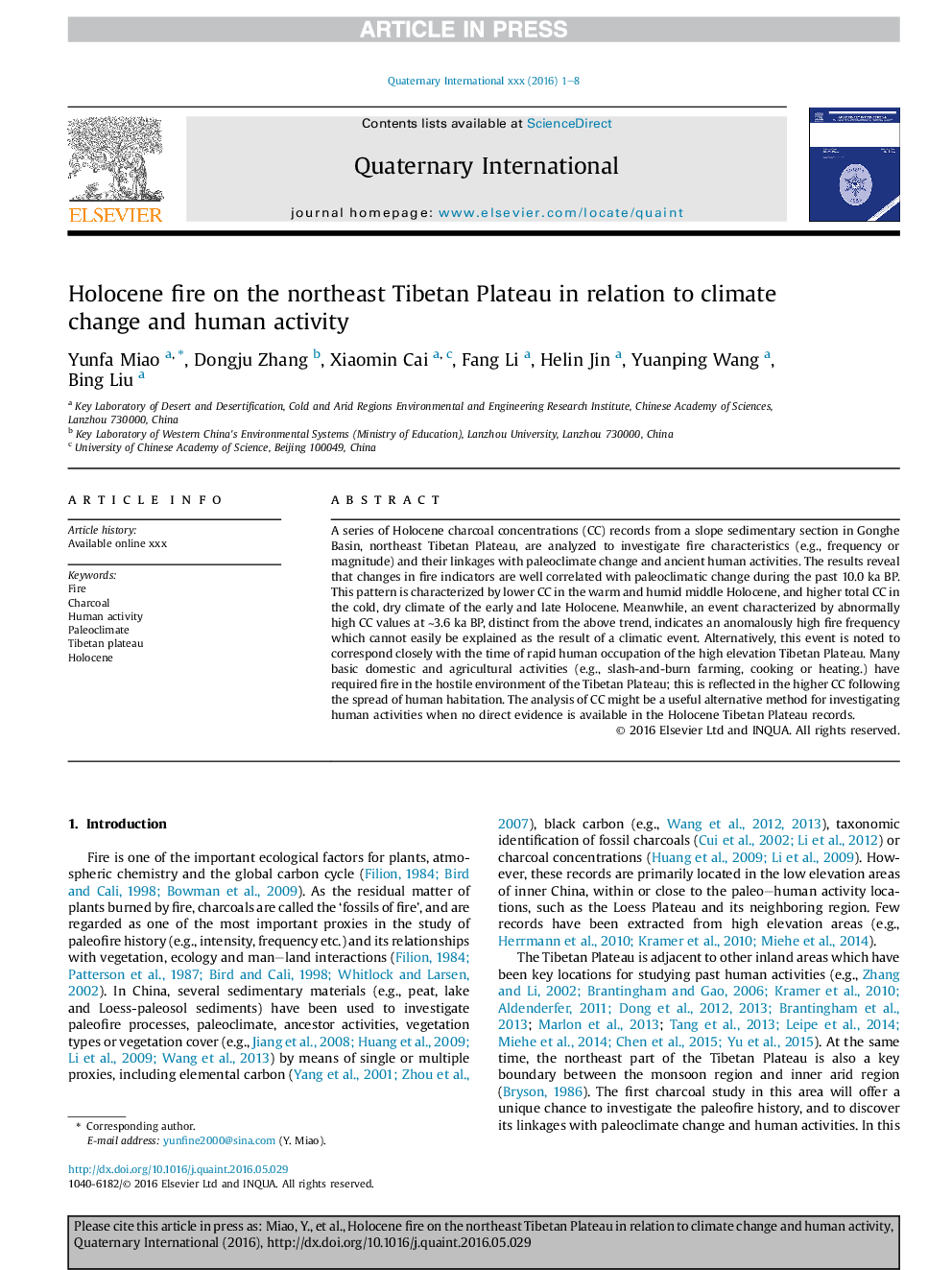| کد مقاله | کد نشریه | سال انتشار | مقاله انگلیسی | نسخه تمام متن |
|---|---|---|---|---|
| 5113132 | 1377915 | 2017 | 8 صفحه PDF | دانلود رایگان |
عنوان انگلیسی مقاله ISI
Holocene fire on the northeast Tibetan Plateau in relation to climate change and human activity
ترجمه فارسی عنوان
آتشفشان هولوسن در فلات تبت در شمال شرق در رابطه با تغییرات آب و هوایی و فعالیت های انسانی
دانلود مقاله + سفارش ترجمه
دانلود مقاله ISI انگلیسی
رایگان برای ایرانیان
کلمات کلیدی
موضوعات مرتبط
مهندسی و علوم پایه
علوم زمین و سیارات
زمین شناسی
چکیده انگلیسی
A series of Holocene charcoal concentrations (CC) records from a slope sedimentary section in Gonghe Basin, northeast Tibetan Plateau, are analyzed to investigate fire characteristics (e.g., frequency or magnitude) and their linkages with paleoclimate change and ancient human activities. The results reveal that changes in fire indicators are well correlated with paleoclimatic change during the past 10.0 ka BP. This pattern is characterized by lower CC in the warm and humid middle Holocene, and higher total CC in the cold, dry climate of the early and late Holocene. Meanwhile, an event characterized by abnormally high CC values at â¼3.6 ka BP, distinct from the above trend, indicates an anomalously high fire frequency which cannot easily be explained as the result of a climatic event. Alternatively, this event is noted to correspond closely with the time of rapid human occupation of the high elevation Tibetan Plateau. Many basic domestic and agricultural activities (e.g., slash-and-burn farming, cooking or heating.) have required fire in the hostile environment of the Tibetan Plateau; this is reflected in the higher CC following the spread of human habitation. The analysis of CC might be a useful alternative method for investigating human activities when no direct evidence is available in the Holocene Tibetan Plateau records.
ناشر
Database: Elsevier - ScienceDirect (ساینس دایرکت)
Journal: Quaternary International - Volume 443, Part B, 10 July 2017, Pages 124-131
Journal: Quaternary International - Volume 443, Part B, 10 July 2017, Pages 124-131
نویسندگان
Yunfa Miao, Dongju Zhang, Xiaomin Cai, Fang Li, Helin Jin, Yuanping Wang, Bing Liu,
